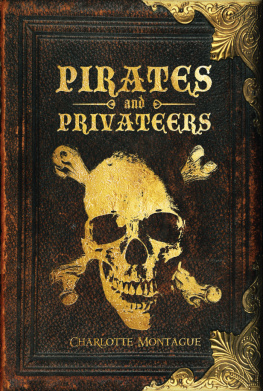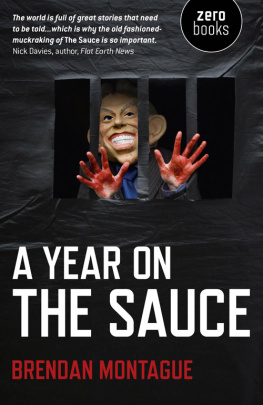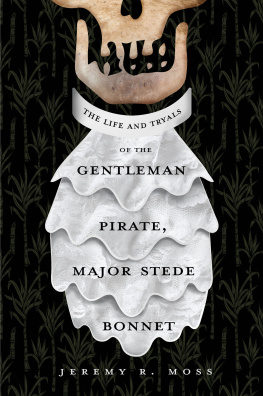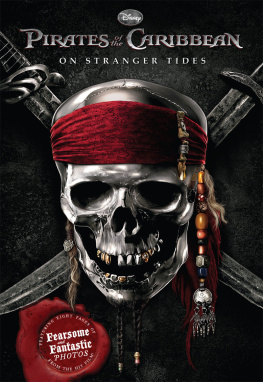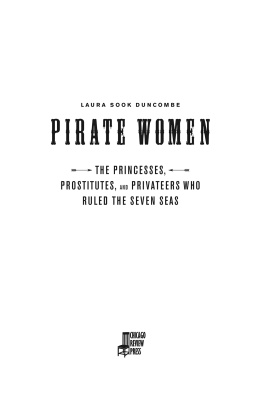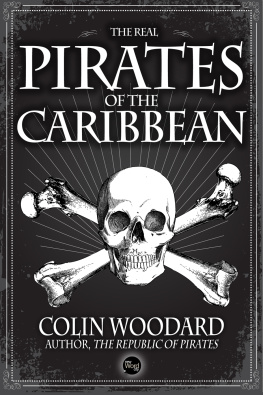Introduction

The image of the pirate is one that still excites and fascinates us today. We all recognize the familiar figure of the man with the jaunty tricorne hat, the eyepatch, and the flamboyant, tattered clothes, burying his treasure chest on a remote island, flying the Jolly Roger aboard his outlaw ship, or drawing his cutlass with a bloodcurdling yell. He remains part of our popular culture, whether in classic adventure stories such as Robert Louis Stevensons Treasure Island , popular contemporary films like Pirates of the Caribbean , or simply as a costume in a childs dressing-up box. But what is the reality behind the myth? And why does this largely historical icon still carry such resonance in the modern world?

Ancient Sea Crime
Piracy has existed since ancient times. The name comes from the Latin pirata and from the Greek piera meaning to attempt, and described the sea robbers that preyed on ships and coastal settlements around the Mediterranean and beyond. In Greek and Roman civilization, the Thracians, Tyrsenians, Illyrians and Phoenicians who specialized in kidnapping children to sell as slaves were all known and feared as pirates. Julius Caesar himself was captured by Sicilian pirates, who demanded a ransom of 25 gold talents. Caesar thought he was worth more, and demanded they raise the ransom to 50, which his supporters duly paid. However, once Caesar was freed, he took his revenge: he pursued the pirates, captured them, and had them all put to death.
During the Dark Ages, from the fall of the Roman Empire to the medieval period, European civilization was under attack from marauding bands of pirates everywhere. From the East Germanic tribes came the Goths; from Scandinavia, the Vikings, ruthless warriors who raided all the great cities of Europe. These scavengers of the sea were joined by Narentines from Croatia, Ushkuiniks from Russia, and Maniots from Greece, as well as Muslims, Slavs and Celts from different tribes across the continent. In India and the Far East, piracy was also thriving, threatening the stability of empires and dynasties there. But it was not until the 16th century that piracy reached its apogee, as the colonial powers of Europe began to underwrite the brigands, in an attempt to gain control of the New World.

The Golden age of piracy
Piracy has always been an attractive option to those who find themselves at the bottom of the social and economic heap. As Black Bart, the most successful pirate of the 17th century, put it, in honest service there is thin commons, low wages, and hard labour. In this (the life of piracy), plenty and satiety, pleasure and ease, liberty and power. He was well aware of the risk of being hanged, which was the standard punishment for piracy at the time, but he took the view that it was a risk worth taking: And who would not balance creditor on this side, when all the hazard that is run for it, at worst is only a sour look or two at choking? No, a merry life and a short one shall be my motto.
The common criminal, on the run from the long arm of the law, was a typical recruit to piracy. Such a man was lOlonnais, one of the most bloodthirsty pirates in history; another was the ex-slave Black Caesar, who ran a rebel colony on the Florida Keys. There were also many who defected from the British Navy, fed up with the poor pay and conditions, and used their maritime skills in the cause of robbery instead. Black Bart, quoted above, was one of these, as was another extremely successful pirate of the period, Henry Avery.
But from the 16th century on, a new breed of pirate began to swell the ranks of the rough-and-ready sea robbers. These men were often from well-educated merchant families some of them even noblemen with connections to the monarchy who owned their own ships and directed their own, often much more professional, operations. They, and their ships, became known as privateers.

Licensed to rob
A privateer was the owner of a ship who had obtained a letter of marque from the state authorizing the bearer to attack enemy shipping. The idea was that, in times of warfare, governments could commandeer private ships to help fight their battles at sea, at little or no cost to themselves. As part of the deal, the privateer might be allowed to keep his prizes captured enemy ships and cargo or he might be required to bring them back to the authorities and split the profits. Theoretically, this system worked well for both the privateer and his sponsors: neither had any real responsibilities to each other, and each could act independently.
In practice, however, the privateer system turned out to be nothing more than a state-supported form of piracy. The privateers were very much their own bosses, and would attack and capture other ships whether enemy or not as they thought fit. Their letters of marque effectively gave them carte blanche to do as they pleased. Communication was slow in those days, and news could take months to travel, so that the privateers could get away with murder. Moreover, in many instances, there was no formal war going on, yet attacks were made indiscriminately, both at sea and on land. These attacks were illegal, yet the British authorities turned a blind eye to them because in a general way, it was in their interests to undermine the power of the Spanish and the French in the New World, where the battle for supremacy was raging.
In a sense, during this period of history, all the major European powers were involved in robbery on a grand scale, squabbling over the spoils of the territories they had claimed in the New World; and the privateers simply became pawns in their game, making out quite literally like bandits, while the kings and queens of Europe plundered and pillaged their way through the Americas, claiming them for their own.

